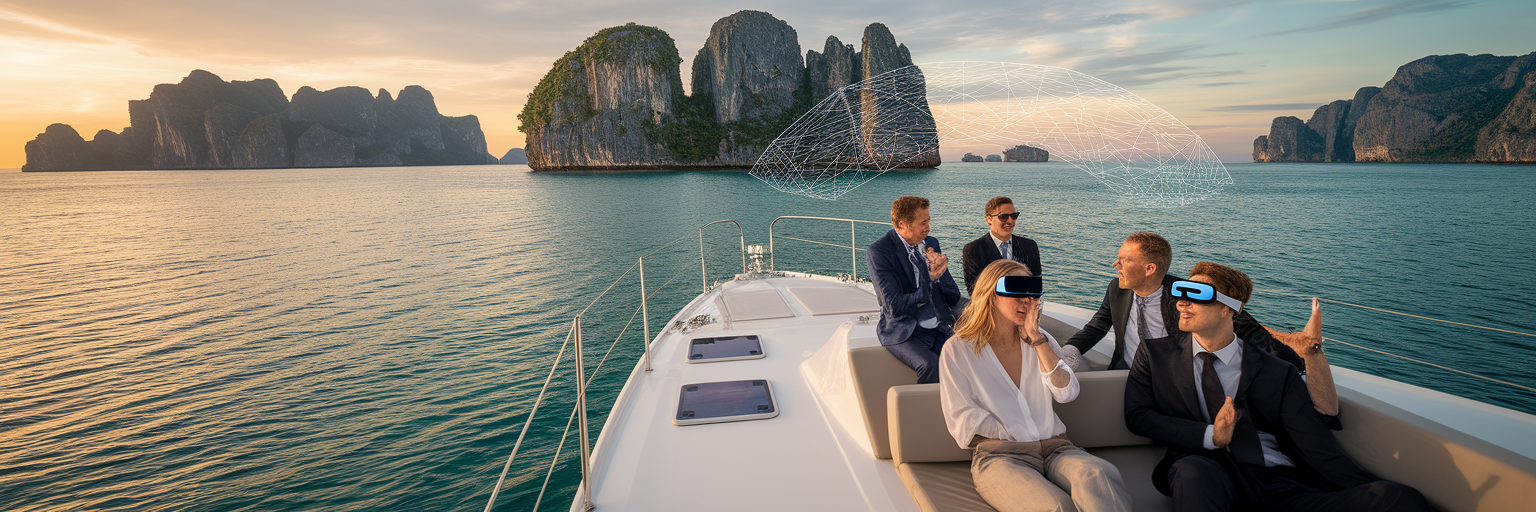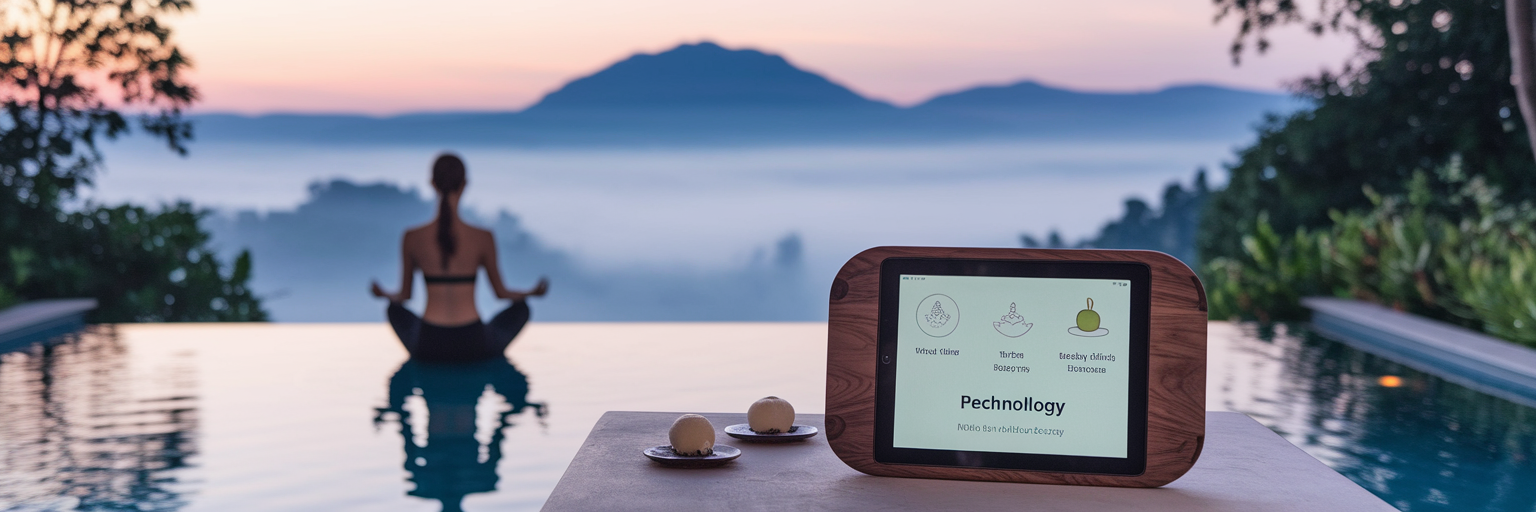How Immersive Experiences Redefine Incentive Travel in Asia
Discover how to blend technology with authentic local culture to design truly motivating and unforgettable corporate travel experiences.

Discover how to blend technology with authentic local culture to design truly motivating and unforgettable corporate travel experiences.

For years, the formula for corporate incentive travel was simple: book a block of rooms at a resort, arrange a few city tours, and host a standard gala dinner. But we have all seen the result. While pleasant, these trips often feel impersonal, a generic reward that fails to inspire a modern, diverse workforce. The photos are posted, the thank you emails are sent, and the impact fades almost as quickly as a tan.
The challenge for today’s business leaders is to design incentive programs that do more than just offer a break from the office. The goal has shifted. It is now about fostering genuine team connection, sparking creativity, and making every employee feel profoundly valued. This requires moving beyond the predictable to create unique corporate retreats in Asia that resonate on a deeper level.
This is where immersive experiences come in. Forget the idea that this is just about virtual reality headsets. An immersive experience is a thoughtfully designed journey that engages multiple senses, is rich in cultural context, and places participants at the very center of a compelling story. It transforms a simple trip into a lasting memory.

Integrating technology into travel should never be about creating a distraction. Instead, it should act as an invisible thread that deepens the connection to a place and its people. When done right, technology becomes a powerful tool for storytelling, enhancing rather than replacing authentic cultural moments. This balanced approach is at the heart of creating truly immersive incentive travel in APAC.
Imagine your team exploring the ancient temples of Ayutthaya. With an AR-enabled tablet, they can see digital reconstructions of the ruins, revealing their former glory right before their eyes. Or picture them in a Balinese artisan’s workshop, where AR overlays provide details about the intricate carving techniques being demonstrated. The technology does not replace the interaction; it enriches it with layers of history and meaning.
Virtual Reality can also play a crucial role, particularly in building anticipation and ensuring inclusivity. A VR preview of a breathtaking boat tour through Ha Long Bay can generate excitement weeks before departure. More importantly, it can provide an accessible alternative for team members who may be unable to join physically demanding activities, ensuring they still feel connected to the group’s core experience. These thoughtful touches are essential for successful corporate events in Thailand and beyond. The key is to use these tools to craft digital experiences that create genuine emotions, supporting human connection without overshadowing it.
While technology can add incredible layers to an experience, the most profound immersion often comes from engaging our most fundamental senses: sight, sound, smell, taste, and touch. This approach intentionally shifts participants from being passive observers to active participants, which is the foundation for creating vivid, lasting memories. It is the difference between watching a travel documentary and living inside of it.
Consider a gala dinner hosted in a historic Peranakan shophouse in Singapore. The experience begins the moment guests arrive. Projection mapping could transform the walls, telling the story of the building’s past (sight). A curated soundtrack of contemporary Singaporean artists could fill the air (sound), while the subtle scent of orchids and spices hangs in the air (smell). A narrative-driven menu from a celebrated local chef would turn each course into a chapter of a culinary story (taste). As an article from Convene highlights, the purpose of such experiential marketing events is not spectacle, but to "forge genuine connections."
Engaging emotions through the senses builds a powerful bond between employees and the company. The trip is no longer just a perk; it becomes a shared, emotionally resonant moment that strengthens loyalty. Crafting these intricate, multi-sensory journeys requires a deep understanding of how to blend different elements into a cohesive narrative, a skill central to the bespoke event services we design.
| Sense | Example Implementation (APAC Context) | Impact on Employee Connection |
|---|---|---|
| Sight | Projection mapping of local history onto venue walls in Penang. | Creates a visually stunning, shared moment of discovery. |
| Sound | Live performance of traditional Gamelan music during a dinner in Bali. | Fosters an authentic atmosphere and emotional resonance. |
| Smell | Diffusing scents of lemongrass and jasmine at a wellness retreat in Chiang Mai. | Triggers memory and creates a calming, memorable environment. |
| Taste | A curated 'storytelling' menu by a local chef in Ho Chi Minh City. | Turns dining into an interactive cultural and team-building activity. |
| Touch | Hands-on workshop with local artisans, such as pottery or silk weaving. | Builds tangible skills and a deeper appreciation for local culture. |
Note: This framework illustrates how sensory elements can be intentionally combined to create a cohesive and emotionally impactful journey, moving beyond standard event planning to create lasting memories.

If an immersive journey creates a shared memory, then personalization makes that memory feel uniquely individual. Technology, particularly AI-powered tools, now allows for a level of customization that was once impossible. This transforms an incentive trip from a group reward into a deeply personal gesture of appreciation, communicating that the company sees and values each employee as an individual.
Imagine your team members completing a simple pre-trip survey about their interests, whether they lean toward adventure, wellness, or culinary exploration. Upon arrival in a vibrant city like Bangkok, where our team curates local experiences, an app on their phone presents a custom itinerary. The thrill-seeker has a rock-climbing session scheduled, while the foodie has a reservation for a private street food tour. This is recognition in its most powerful form.
This tailored approach delivers significant benefits beyond just making people feel special.
An immersive incentive trip requires a greater investment of time and resources than a standard package. Naturally, business leaders will ask about the return. The answer lies in looking beyond simplistic post-trip satisfaction surveys, which often measure fleeting happiness rather than lasting impact. The true value of these experiences is found in deeper, more meaningful metrics.
To measure success, we must assess the strategic goals of the program. This means tracking changes in team dynamics and business outcomes. Consider these metrics:
The higher cost and logistical complexity are not barriers; they are a strategic investment in your most valuable asset: your people. The long-term returns are tangible, manifesting as improved employee retention, stronger team collaboration, and a more motivated workforce. In the competitive market of MICE travel Asia, providing unforgettable, emotionally impactful experiences is no longer a luxury. It is a business necessity for companies that want to attract and retain top talent. If you are ready to make that investment, we are ready to work with you to create something extraordinary.